Related Research Articles

Bayezid II was the sultan of the Ottoman Empire from 1481 to 1512. During his reign, Bayezid consolidated the Ottoman Empire, thwarted a pro-Safavid rebellion and finally abdicated his throne to his son, Selim I. Bayezid evacuated Sephardi Jews from Spain following the fall of the Nasrid Kingdom of Granada and the proclamation of the Alhambra Decree and resettled them throughout Ottoman lands, especially in Salonica.
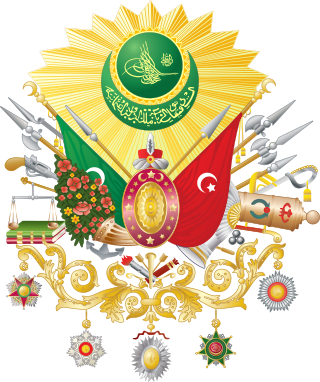
The Ottoman dynasty consisted of the members of the imperial House of Osman, also known as the Ottomans. According to Ottoman tradition, the family originated from the Kayı tribe branch of the Oghuz Turks, under Osman I in northwestern Anatolia in the district of Bilecik, Söğüt. The Ottoman dynasty, named after Osman I, ruled the Ottoman Empire from c. 1299 to 1922.
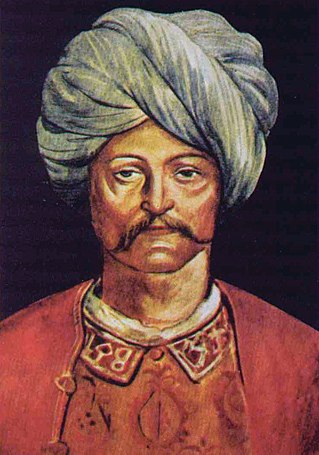
Cem Sultan or Sultan Cem or Şehzade Cem, was a claimant to the Ottoman throne in the 15th century.

Alevism is a syncretic Islamic tradition, whose adherents follow the mystical Islamic teachings of Haji Bektash Veli, who taught the teachings of the Twelve Imams, whilst incorporating some traditions from Tengrism. Differing from Sunni Islam and Usuli Twelver Shia Islam, Alevis have no binding religious dogmas, and teachings are passed on by a spiritual leader as with Sufi orders. They acknowledge the six articles of faith of Islam, but may differ regarding their interpretation. They have faced significant institutional stigma from the Ottoman and later Turkish state and academia, being described as heterodox to contrast them with the "orthodox" Sunni majority.

Pierre d'Aubusson was a Grand Master of the Order of Saint John of Jerusalem, and a zealous opponent of the Ottoman Empire.
A cemevi or cem evi is a place of fundamental importance for Turkey's Alevi-Bektashiyyah tariqa populations. Certain Alevi organizations describe cemevis as places of worship, and ask for this to be officially recognized. However, the Directorate of Religious Affairs of Turkey does not recognise cemevis as Muslim places of worship, and only recognises Sunni and Ja'fari-Shi’ite mosques.

Hopa is a town in Artvin Province in northeast Turkey. It is located on the eastern Turkish Black Sea coast about 67 km (42 mi) from the city of Artvin and 18 kilometres from the border with Georgia. It is the seat of Hopa District. Its population is 23,846 (2021).
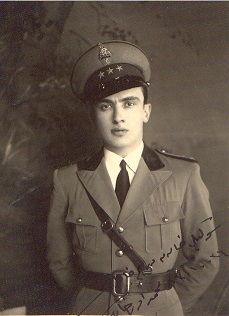
Şehzade Mehmed Orhan Efendi was an Ottoman prince and the 42nd head of the Ottoman dynasty from 1983 to 1994. He was the advisor of King Zog I of Albania and succeeded as head of the Ottoman dynasty on 9 December 1983, following the death of Şehzade Ali Vâsib.
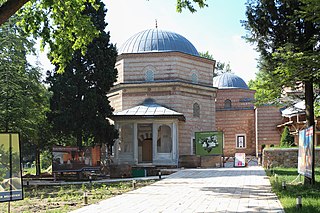
The Muradiye Complex or the Complex of Sultan Murad II, the Ottoman sultan, is located in Bursa, Turkey. It is part of the historic UNESCO World Heritage Site.
![<i>Malkoçoğlu Cem Sultan</i> 1970 [[Turkey]], Iran film](https://upload.wikimedia.org/wikipedia/en/2/25/Malko%C3%A7o%C4%9Flu_Cem_Sultan.jpg)
Malkoçoğlu Cem Sultan is a Turkish historical action film by Remzi Aydın Jöntürk and Hassan Sasanpour. It is one of the numerous collaborations between the famous actor Cüneyt Arkın and Jöntürk. The film belongs to the wave of historical films in the Turkish cinema. The film is about the beloved comics character of Ayhan Başoğlu, Malkoçoğlu. The film was shot simultaneously in Turkish and in Persian. The Iranian version was released as Serzemin-e Delaveran in 1972.
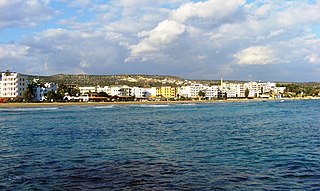
Kızkalesi is a neighbourhood in the municipality and district of Erdemli, Mersin Province, Turkey. Its population is 1,781 (2022). Before the 2013 reorganisation, it was a town (belde). The town, known in Antiquity as Corycus or Korykos, is named after the ancient castle built on a small island just facing the town.
Karamani Mehmet Pasha was an Ottoman statesman who served as Grand Vizier from 1477 to 1481.

Osmanoğlu is a family belonging to the historical Ottoman dynasty, which was the ruling house of the Ottoman Empire from 1299 until the abolition of the Ottoman sultanate in 1922, and the Ottoman Caliphate from 1517 until the abolition of the caliphate in 1924. In 1924, members of the Osmanoğlu family were forced into exile. Their descendants now live in many countries throughout Europe, as well as in the United States, the Middle East, and since they have now been permitted to return to their homeland, many now also live in Turkey. The female members of the dynasty were allowed to return after 1951, and the male members after 1973. The family adopted the surname of Osmanoğlu, meaning "son of Osman".
Cem Sultan may refer to:
Kasım of Karaman was the last bey of the Karaman Beylik, a Turkish principality in Anatolia in the 15th century. He was son of Ibrahim II of Karaman and Ilaldi Sultan Hatun, daughter of Ottoman Sultan Mehmed I.
Çiçek Hatun was a concubine of Sultan Mehmed the Conqueror of the Ottoman Empire. She was the mother of Şehzade Cem, a pretender to the Ottoman throne.

Selçuk Hatun was an Ottoman princess, the daughter of Ottoman Sultan Mehmed I and one of his concubine, Kumru Hatun. She was the half-sister of Sultan Murad II.
Emine Mukbile Sultan was an Ottoman princess, the daughter of Şehzade Ömer Hilmi, son of Mehmed V.
Şehzade Murad, later Pierre Mehmed, prince de Sayd, was an Ottoman prince, son of Cem Sultan. Little is known about his early life. After their exile, Murad stayed in Cairo and later escaped to Rhodes, because he feared that the Mamluks would surrender him to Bayezid II, who executed his half-brothers Abdullah and Oguzhan. Marino Sanuto says that on 5 December 1516, an ambassador of the Mamluk sultan came to Rhodes to demand the surrender of Murad, but the knights refused outright. Murad was given the Chateau de Fondo as his residence and showed gratitude by converting to Roman Catholicism, changing his name to Pierre. Pope Alexander VI created the Principate de Sayd in 1492 as a papal fief for him. Later, he married an Italian woman named Maria Concetta Doria, who had seven children from him, four sons and three daughters. When Suleiman the Magnificent conquered Rhodes in 1522, he insisted that Murad to be handed over him, whereupon he had the prince executed with his two oldest sons.

Kara Castle is a castle ruin in Mersin Province, Turkey. Actually its name was Corycus Castle. The ancient town Corycus had two castles; one on the island facing the town and one on the land. So its customary to call the land castle Kara Castle .The castle is at 36°27′46″N34°09′03″E. Its distance to Erdemli is 22 kilometres (14 mi) and to Mersin is 59 kilometres (37 mi).
